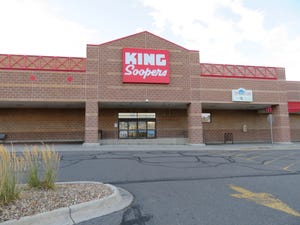Is dynamic pricing feasible within supermarkets?Is dynamic pricing feasible within supermarkets?
Digital shelf tags could help grocers reduce waste, boost profit margins: report
March 7, 2024

Dynamic pricing could reduce food waste and boost profit margins in supermarkets, according to some pricing experts.
A report this week on National Public Radio’s “Planet Money” podcast explored the feasibility of implementing a dynamic pricing model in U.S. grocery stores, which could encourage the rapid sale of products that are nearing expiration.
The report follows the recent announcement by Wendy’s that it was planning to test dynamic pricing in its restaurants, thanks to new digital menu boards. That announcement was followed by a clarification that it was not planning to implement “surge pricing,” or raising prices during periods of high demand, after widespread backlash from consumer advocates and a spate of negative publicity.
Consumers have become accustomed to dynamic pricing for hotel rooms, airline tickets, and Uber rides, which all adjust the prices that they charge for the same product based on consumer demand. Supermarkets in the U.S. have only dabbled in dynamic pricing, however, offering discounts on meats about to expire, for example, or reducing prices on fresh-baked goods at the end of the day.
The NPR report showcased how REMA, a 600-unit supermarket chain in Norway, has been using dynamic pricing since 2012, and has reduced food waste by 40%. It is among several European retailers that have adopted the practice.
REMA uses electronic shelf tags to set prices centrally for its entire chain, making as many as 2,000 price changes per day. It employs a network of “price hunters” who visit the company’s stores and those of its competitors to report on prices of individual items, alerting REMA when a product is available at a lower price at a competitor’s store.
“This could be the future” of supermarket pricing in the U.S., said Planet Money host Nick Fountain, who noted that chains including Whole Foods, Amazon Fresh, Hy-Vee, Schnucks, Kroger, and Walmart have all tested electronic shelf labels.
The report noted that REMA only raises prices overnight, to minimize the possibility that a price could increase between the time when a shopper picks an item off the shelf and when they check out. The report also noted that REMA is also currently under investigation for possible price collusion with other retailers, a charge the company denied.
Fountain and NPR co-host Amanda Aronczyk interviewed two pricing experts, Robert Sanders of the University of California-San Diego, and Ioannis (Yannis) Stamatopoulus of the University of Texas-Austin, who said the savings that supermarkets could generate by implementing dynamic pricing would exceed the investment costs.
Both Sanders and Stamatopoulus have studied opportunities for dynamic pricing in supermarkets extensively. The opportunity is especially acute for perishable items that are approaching their sell-by date, they said.
“It is a worse product as time goes by … and it becomes worthless to the consumer,” said Stamatopoulus. “All these pressures point in the same direction. The price should go down.”
Instead, supermarkets “use the same [static pricing] strategy for lettuce as they do for salt,” said Aronczyk.
Sanders issued a report last year that found that dynamic food pricing could reduce food waste by an average of 21% and increase supermarket gross margins by 3%.
The challenges supermarkets face in implementing dynamic pricing include the cost of paying workers to physically remove all price tags and replace them with new ones — a cost that would be eliminated with the implementation of digital shelf tags. In fact, it was the high labor costs involved in applying price tags that spurred REMA to install digital shelf tags more than 10 years ago.
Another challenge is that supermarket inventory systems need to have accurate, real-time measurements of product availability, which is not always the case when products are stolen or discarded due to damage, for example.
About the Author
You May Also Like






